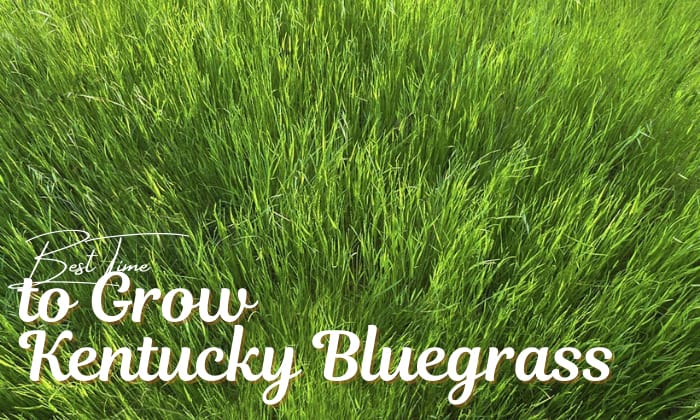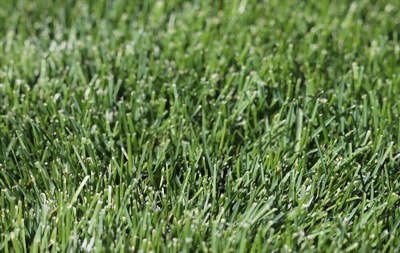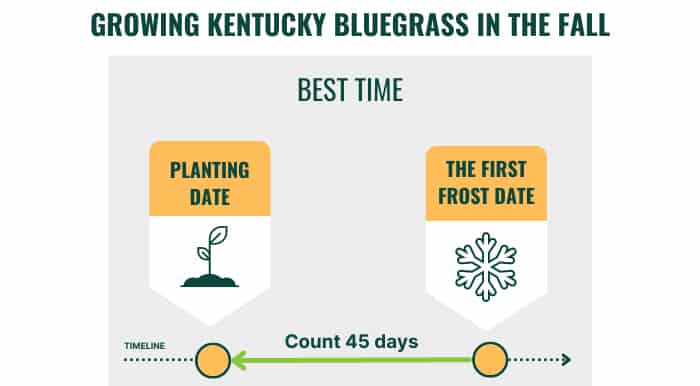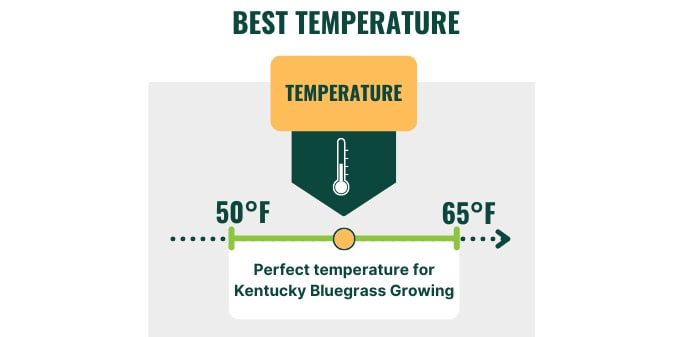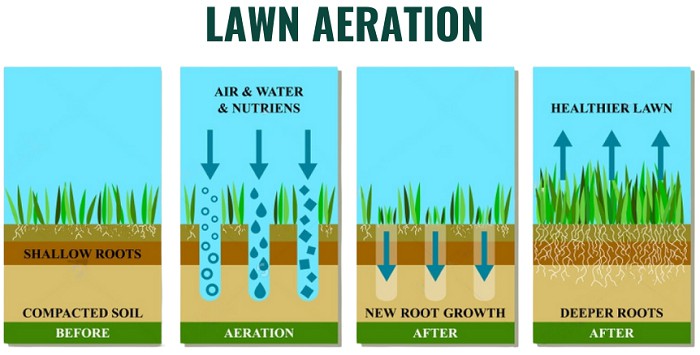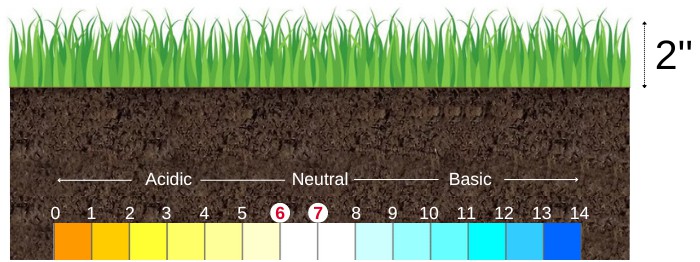A thick, lush lawn is by far the best thing to complement the blooming flowers in the garden. And Kentucky bluegrass is one of the best choices to plant because of its excellent quality after growth.
If you want to establish this grass, learning when is the best time to plant Kentucky bluegrass is essential because it grows well in a certain time and season. And it may require maintenance to perform well.
Therefore, plant Kentucky bluegrass around September-November or March-May, at a soil temperature of 50-65°F to expect a thriving lush lawn as it grows.
Table of Contents
Best Time to Grow Kentucky Bluegrass
1. What is Kentucky Bluegrass?
The Kentucky bluegrass lawn is a cool-season grass that is home to many northern places. It is more tolerant of cold and doesn’t do best in heat. That’s why you may need to reconsider planting this if you live in a tropical climate.
Although Kentucky bluegrass germinates at a slow pace, it has amazing traits as it can spread quickly and has the ability to repair itself from damage. And these characteristics make gardeners want to plant it.
2. What season and month to plant Kentucky Bluegrass?
- September through November in the fall
Since Kentucky bluegrass is a cool-season plant, its germination time will begin once the temperature starts to cool down.
For this reason, the best time to plant it is around September through November in the fall, when the summer heat is no longer present.
Planting Kentucky bluegrass at least 45 days before frosty weather arrives is the optimum calendar because it will help the grass get established before extreme temperatures in winter have the chance to damage it.
Although Kentucky bluegrass is cold-hardy, the harsh winter temperature may still hurt it. Thus, know your region’s start of frost before seeding your lawn.
For example, if you live in Maryland, your first frost date will most likely fall on November 15 at the latest. So plant grass on October 1.
- March through May in the spring
To establish lush lawns, growing them during the proper planting season is the key. Spring is an alternative calendar for overseeding Kentucky bluegrass, as weather during this time of year still bears a milder temperature than summer and winter.
However, growing Kentucky bluegrass at this time means the plant may suffer from active weeds that tend to rise up during springtime.
So, to prevent this problem, you can apply a pre-emergent herbicide 6 to 8 weeks after planting Kentucky seeds.
Aside from that, you must watch out for the rising temperatures once summertime comes. Since this turf has shorter roots than other grass, it doesn’t perform well in heat and may go dormant in the summer.
To help Kentucky bluegrass thrive during these challenging times, always remember its water requirements. Irrigate the soil with 2 inches of water weekly.
What Soil Temperature to Plant Kentucky Bluegrass?
The soil temperature also matters in establishing a healthy Kentucky bluegrass field. The garden bed needs to be in the appropriate condition, ranging between 50-65°F for optimum root growth.
Take note that cold soil is not ideal for this plant, so you must wait until the weather becomes warm before seeding so that the grass will germinate and be healthy to fight off harsh temperatures during winter.
How to Plant?
- Help your soil receive the necessary natural resources like water, air, and more by poking through it before planting.
- Remove any dead grass.
- Seed your lawn using a slice seeder or anything that can help spread the seeds.
- Sow the Kentucky bluegrass seed ½-inch deep.
- Apply a fertilizer that is appropriate for your grass at a depth of four inches. Use a slow-release formula and follow the results of your soil test. Usually, new lawns will need high amounts of nitrogen, phosphorus, and potassium.
Care and Maintenance Tips
- When growing Kentucky bluegrass, ensure to water it daily for healthy growth.
- Apply nitrogen to help the grass perform best.
- Apply a pre-emergent fertilizer every year during the beginning of spring to rule out unwanted grass.
- Maintain the 2-inch height of your grass to support its growth. Avoid letting the shoots grow more than that and refrain from cutting them too low to keep the seedlings healthy.
- Keep your soil pH in a range between 6.00 to 7.00.
- Cover your lawn with compost or any other organic matter to keep your soil healthy and workable.
FAQs
How long does it take for Kentucky Bluegrass to establish?
KY blue grass establishes slower than other grass. It needs up to 30 days to germinate and may take up to 5 weeks before the grass becomes really established.
At what temperature does Kentucky bluegrass grow best?
The best temperature to plant Kentucky bluegrass is when the air hits 60° to 75°F.
When the temperature reaches 90°F, roots will not grow at their best, and 32°F will impede their growth.
Conclusion
Kentucky bluegrass may be a lot different from other grasses because of its lower tolerance to heat and slower germination and establishment.
But what makes it remarkable is that, once established, it produces beautiful, thick, and lush green turf.
Just remember to plant the grass in the fall or spring under a mild soil temperature so that the plant will achieve the finest growth.
I hope that this post about when is the best time to plant Kentucky bluegrass will help you achieve the most attractive lawn soon.
Related: The standard schedule for sowing plants in Kentucky, such as pumpkins and tomatoes.

Hi, I am William – Floridayards’ digital content creator. My job is to find answers to all your concerns with thorough research and our team’s expert advice. I will also bring you honest reviews on the best products and equipment for raising your beautiful garden. Please look forward to our work!


